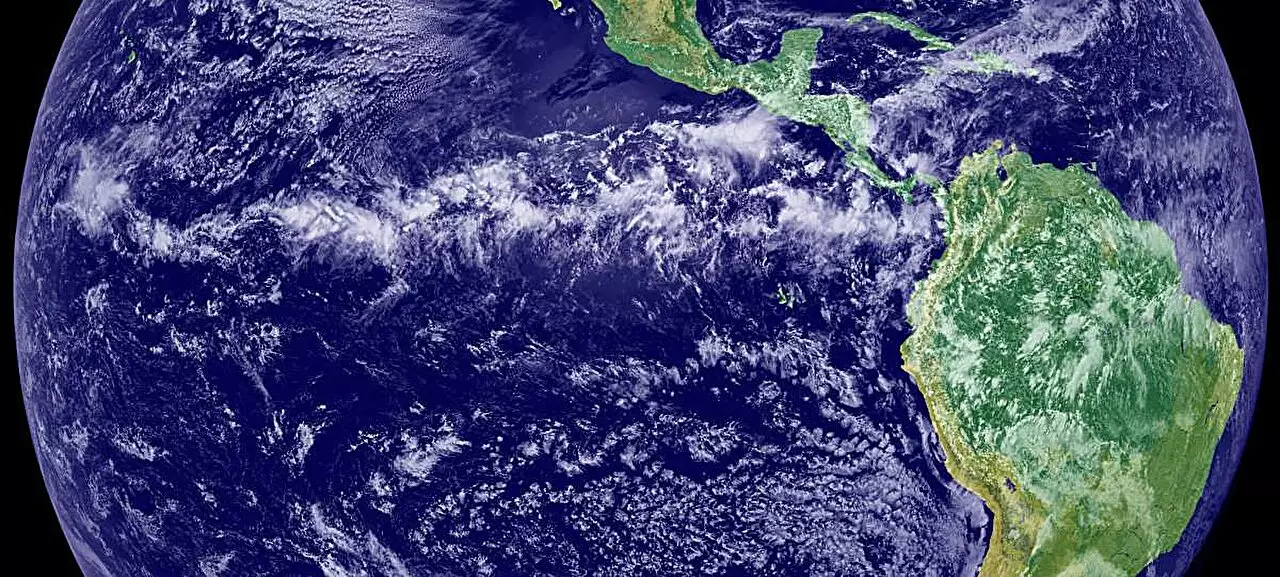The summer of 2024 has shattered records, emerging as the hottest summer the planet has ever seen. This unsettling development is alarming yet predictable, as the reality of climate change has been manifesting for years. The Northern Hemisphere, in particular, is grappling with the consequences of this unforgiving heat—marked by persistent droughts and extreme heatwaves that plague regions such as North America and Europe. These climatic upheavals not only disrupt ecosystems but also inflict significant damage on agriculture, increase health risks, and heighten the probability of widespread wildfires.
The underlying causes of this climate crisis extend beyond mere temperature spikes; they are deeply intertwined with the dynamics of the Earth’s atmospheric circulation systems, which, historically, have been responsible for the distribution of heat and moisture around the planet. Unfortunately, recent studies suggest that these vital systems are on a troubling decline, exhibiting signs of weakening that have befuddled climate scientists.
Recent research led by Dr. Rei Chemke from the Weizmann Institute of Science offers a critical insight: the degradation of these atmospheric circulation systems, specifically the weakening of storm tracks and the Hadley circulation, is largely attributable to human activity. For decades, scientists have observed a trend where the storm tracks—significant weather patterns that help transport heat and moisture—have been diminishing in strength. The question remained: what was causing this unsettling phenomenon?
Dr. Chemke, in collaboration with Prof. Dim Coumou from the Vrije Universiteit Amsterdam, unveiled compelling evidence that the emissions from human activities, particularly greenhouse gases such as carbon dioxide and aerosols, act as a catalyst for this change. The warming effect is more pronounced at higher latitudes, resulting in the narrowing of the temperature gradient between the poles and the equator. This reduction in temperature disparity is instrumental in the weakening of storm tracks, which constitute a crucial network of air currents that influence climatic conditions across the globe.
By analyzing extensive datasets from both observational and simulation models, Chemke’s team concluded that acknowledging historical emissions provided the missing link in understanding the observed decline in storm activity. Specifically, they discovered that these summer storms are essential for channeling cooler air from the oceans inland. Therefore, as the intensity of these storms wanes, we are left with a dangerous accumulation of heat on land surfaces, fostering conditions that lead to extreme weather events.
Reversing Past Trends: The Hadley Circulation
In addition to storm tracks, the research turned its attention to the Hadley circulation—a significant atmospheric phenomenon characterized by warm air ascending at the equator and subsequently flowing toward the poles, only to descend in the subtropics and return to the equator. Unfortunately, this vital circulation has also been in decline since at least the 1980s, but until now, its weakening was primarily linked to anthropogenic emissions without a full understanding of its contrasting relationship to historical climatic factors.
Through rigorous historical climate modeling, Chemke and his research team were able to distinguish how natural influences—such as volcanic activity and variations in solar output—had previously reinforced the Hadley circulation over the last millennium. In stark contrast to today’s climate, which is predominantly driven by human emissions, these prior influences fostered a cooler climate that had the effect of bolstering this essential circulation.
The results presented a chilling realization: humanity’s impact on climate change is not only immediate but also reverses the previously beneficial effects of natural climatic factors, introducing an unprecedented dynamic into our atmospheric systems.
These findings indicate a significant paradigm shift in climate science—the need for a more balanced examination of both human-induced and natural climatic influences on atmospheric systems. Historically, researchers have focused predominantly on anthropogenic factors, often sidelining the essential roles played by natural phenomena. Chemke’s work underlines the necessity for a holistic perspective that integrates an understanding of both human activities and natural variations in climate models.
The growing body of evidence emphasizes that human-caused emissions are not merely compounding existing issues but are fundamentally altering the way our atmosphere operates. It becomes increasingly crucial to account for the impact of natural factors alongside emissions created by human endeavor, as our understanding of climate dynamics evolves.
The summer of 2024 serves as a grim reminder that we are at a pivotal juncture in climate history. With the weakening of storm tracks and the Hadley circulation, the repercussions of our actions are becoming apparent. Addressing this crisis requires an urgent commitment to comprehensive research and proactive measures to mitigate our impact on the planet. Only through collaborative efforts can we hope to restore balance to our climate systems and ensure a stable future for generations to come.


Leave a Reply